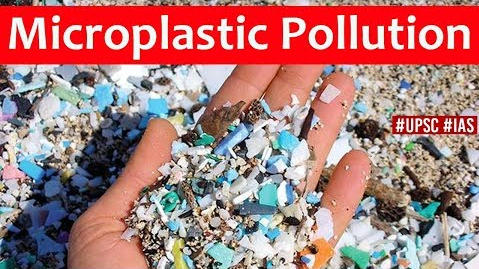Table of Contents
Context
- Tiny particles of plastic, known as microplastics, have been found in the Arctic region and the Alps.
- The study called for an urgent assessment of the risk.
Microplastics

- Microplastics are defined as shreds of plastic less than 5 mm in length.
- Microplastics are either manufactured or they are formed when larger pieces of plastic break down.
- The small, shiny particles advertised as “cooling crystals” in certain toothpastes
- Main contributors to this pollution is plastic waste, 90% of which is not recycled.
Concerns
- Contamination of snow by microplastics.
- Several other recent studies have established the presence of microplastics in groundwater
- A study published in June estimated that the average human ends up consuming at least 50,000 particles of microplastics in food every year.
Action
- Passed laws to limit the amount of microplastics in the environment.
- The US passed a law in 2015 to prohibit the manufacture of rinseoff cosmetic products containing plastic microbeads.
People’s Ingestion Of Plastic
- Drinking water: is one of the largest sources of plastic ingestion(with plastic particles found in bottled, tap, surface and groundwater).
- Shellfish: account for as much as 0.5g a week.
- Inhalation represented a negligible proportion of microplastics entering the human body.
- Indoor air because of its limited circulation is more heavily polluted with plastic than the outdoors.
- Major sources of Indoor airborne microplastics are synthetic textiles and household dust.

- Burden of Plastic
- Plastic pollution and Wildlife
Curbing Plastic Pollution
- Political and economic actions
- Minimize the use of plastics
- Legally binding agreement
- Binding national commitments
- What are microplastics? Discuss the threats by them.What should be the way forward to overcome the threats posed by the same?
Latest Burning Issues | Free PDF






















 WhatsApp
WhatsApp